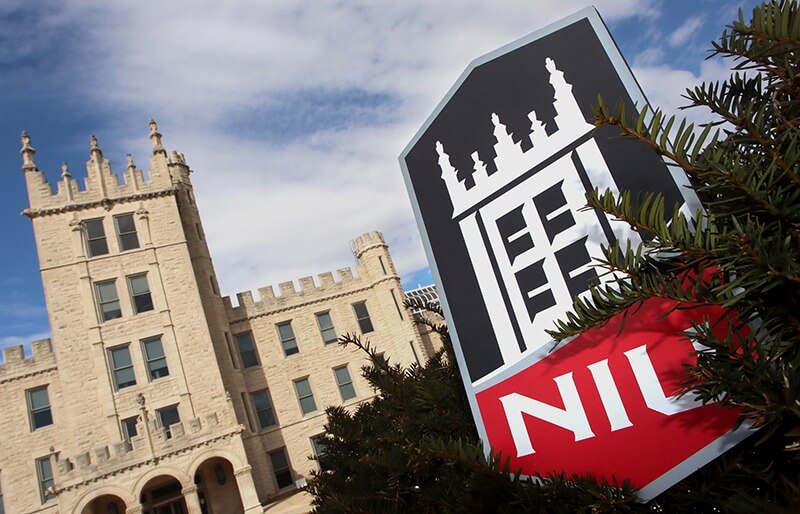As the spring semester nears its end, many at Northern Illinois University are looking ahead to next year, working to attract next fall’s incoming class. Aiding in that effort is a suite of new tools to make enrolling at NIU easier.
“We are adamant that a life-changing NIU education should be within reach of every qualified student, so we strive to remove as many barriers as possible. The tools that we have adopted over the last few years allow us to live up to that commitment and have gained us recognition as an innovator,” said Sol Jensen, NIU vice president for Enrollment Management, Marketing and Communications.
 For instance, last spring, NIU made a splash by becoming one of the first public universities in the nation to announce that it was adopting test-free admissions and merit scholarships.
For instance, last spring, NIU made a splash by becoming one of the first public universities in the nation to announce that it was adopting test-free admissions and merit scholarships.
“We recognize that students’ hard work in high school is reflected in their grades rather than standardized test scores,” Jensen said. “This approach not only eliminates barriers to starting college, it also helps ensure that good students who had low test scores can get the financial aid they need to ensure they complete their degrees.”
Also helping to lower the cost of attendance for many potential students are two new innovative programs: the Huskie Pledge and the Rockford Promise.
The Huskie Pledge program ensures that Illinois students from households with an income of $75,000 or less, who have a high school GPA of 3.0 or better, can attend NIU paying no tuition or general fees for their first year and potentially beyond. In the fall of 2020, more than 700 freshmen (80% of whom were students of color) qualified for the program, boasting an average high school GPA of 3.57. The new Rockford Promise NIU Scholarship, which is funded in part by the City of Rockford, offers the same opportunities for most graduates of Rockford public high schools and has created a surge of interest from that area.
To make attending NIU even more attractive, the university also has eliminated the more expensive tuition rates for domestic out-of-state residents and done away with undergraduate application fees for all students.
“I am very proud to say that we are leading the way in Illinois and nationally when it comes to removing barriers,” said NIU President Dr. Lisa C. Freeman.
All of those efforts are paying off as the university is on track for a record number of applications this year. About half of the total to date has come via another new tool, the Common Application, which the university began using last year. That tool allows students to use a single application to apply to multiple schools at once. Last Friday, Gov. J.B. Pritzker announced that beginning this fall all Illinois public universities will begin using it , making Illinois only the second state in the nation to take that step. Pritzker hopes that it will encourage more Illinois students to remain in-state while they pursue a college degree.
“Making college possible for those students who assume it’s not an option for them isn’t just about affordability,” said Pritzker. “It’s also about making it easier to navigate a process that has too often left those from under-resourced communities tangled up in the fine print.”
While the Common Application has helped increase the number of students applying to NIU, Jensen cautions that an increase in applications does not automatically translate to more students enrolled. However, he points out, it does dramatically expand the number of students NIU is able to engage on a different level.
“When a student includes NIU on their list of schools on the Common Application or applies to NIU because of the Huskie Pledge or Rockford Promise, it opens up a whole new conversation. It changes how we communicate with them and increases our opportunities to tell them about all that NIU has to offer, which certainly increases the odds of one day getting those students to become Huskies.”
The Common Application is provided through a not-for-profit membership organization, which represents about 900 universities in the United States and 20 countries around the globe. It is designed to make the application process simple and logical, removing some the hurdles to taking those first steps toward a college education. It is used each year by about 1 million students (about a third of whom are first-generation students), allowing them to fill out the form once and apply to multiple universities with a few clicks.
